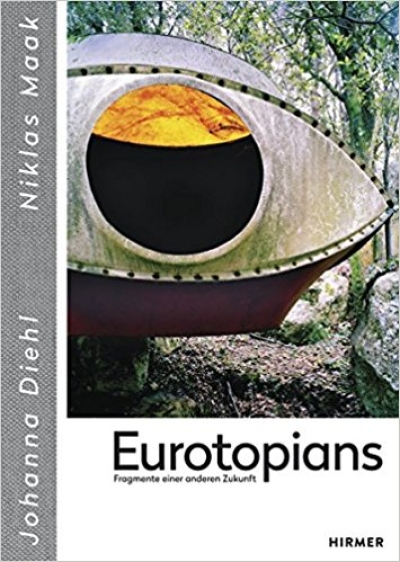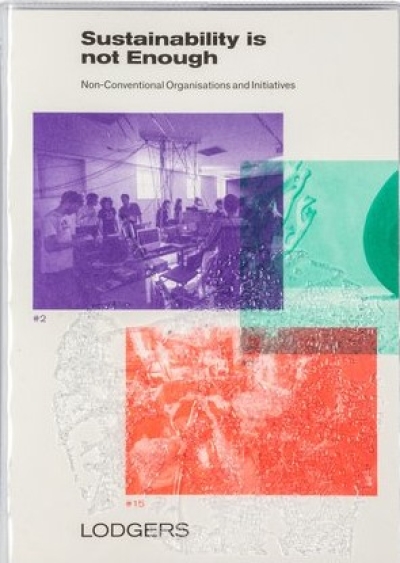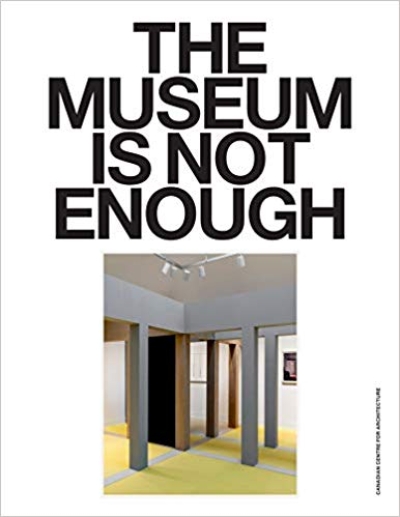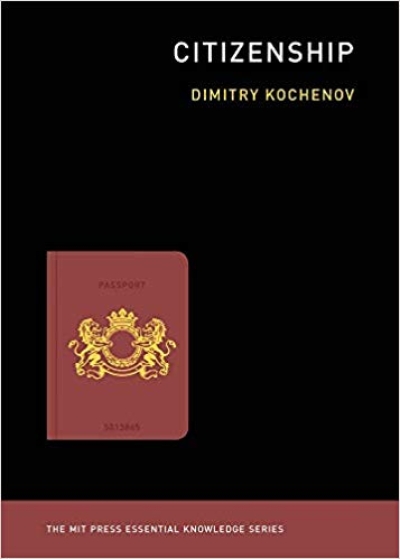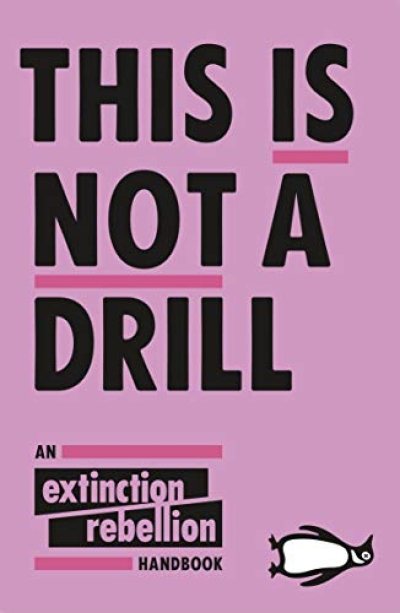Wiel Arets
Un-Conscious-City
Achille Mbembe
Necropolitics
K. Jacobson, A. Ray (eds)
...and Other Such Stories: 2019 Chicago Architecture…
Barsac, Cheruet, Perriand (eds.)
Charlotte Perriand: Inventing A New World
Daniel López-Pérez
R. Buckminster Fuller - Pattern-Thinking
Carlana, Mezzalira, Pentimalli (eds.)
Quirino De Giorgio. An Architect's Legacy
Annette Weisser
Mycelium
Hendrik Kempt, Megan Volpert (Ed.)
RuPaul's Drag Race and Philosophy. Sissy That Thought
Warren Neidich
The Glossary of Cognitive Activism (For a not so distant…
Crimson Historians & Urbanists
City of Comings and Goings
Alan Quireyns, Nav Haq
Sustainability is not enough. Non-Conventional…
Borasi, Ferré, Garutti, Kelley, Zardini…
The Museum Is Not Enough
Mark van Wageningen
Color and Type: Mehrfarbige Multi-Layer-Schriften entwerfen…
M. Kries, T. Cunz (Hg)
Objekte der Begierde. Surrealismus und Design 1924 - Heute
Lukas Feireiss
Radical Cut-Up: Nothing Is Original
Chanon Goodwin (Ed.)
Permanent Recession: A Handbook on Art, Labour and…
David Toop
Inflamed Invisible: Collected Writings on Art and Sound,…
Tom Bieling (Ed.)
Design (&) Activism: Perspectives on Design as Activism…
Material Matters 04
Paper: Creative interpretations of common materials
Kate Franklin, Caroline Till
Radical Matter: Rethinking Materials for a Sustainable…
Owen Hatherley, Christopher Herwig
Soviet Metro Stations
Amt für Hochbauten der Stadt Zürich
Pavillon Le Corbusier Zürich: Restaurierung eines…
Peter Adam
Eileen Gray: Her Life and Work
Diedrich Diederichsen, Anselm Franke (…
Liebe und Ethnologie: die koloniale Dialektik der…
Eyal Weizman
Forensic Architecture: Violence at the Threshold of…
Jens Müller (Ed.)
West-Berlin Grafik-Design. Gestaltung hinter dem Eisernen…
Dimitry Kochenov
Citizenship (Essential Knowledge Series)
Jason Oddy
Revolution Will Be Stopped Halfway: Oscar Niemeyer in…
Alessandro Zambelli
Scandalous Space - Between architecture and archaeology
Holly Buck
After Geoengineering: Climate Tragedy, Repair, and…
Junya Ishigami
Serpentine Pavilion 2019
Jesús Vassallo
Epics in the Everyday: Photography, Architecture, and the…
A. Gigon, M. Guyer (Hg.)
Bürogebäude
Mckenzie Wark
Capital Is Dead: Is This Something Worse?
Susanne Hefti & Damjan Kokalevski
Skopje Walkie Talkie
K. Grimstad, S. Rennie (Hg)
The New Woman's Survival Catalog: A Woman-Made Book
Fink, Graff, Rostek, Wagner (Hg.)
Architects on Architects
Natasha Lennard
Being Numerous. Essays on Non-Fascist Life
Graphic #44
Berlin Issue
Peter Weibel (Hg.)
Sound Art: Sound as a Medium of Art
Walter Scheiffele
Ostmoderne-Westmoderne
Samuel Greengard
Virtual Reality
Ion Grigorescu
From static oblivion
Guy Standing
Plunder of the Commons: A Manifesto for Sharing Public…
Sofia Bempeza
Geschichte(n) des Kunststreiks
Vilém Flusser
Vom Stand der Dinge. Eine kleine Philosophie des Design
Jane Hall
Breaking Ground: Architecture by Women
Jason Bahbak Mohaghegh
Omnicide: Mania, Fatality, and the Future-in-Delirium
Chantal Akerman
My Mother Laughs
Stiftung Buchkunst
Die Schönsten Deutschen Bücher 2019: The Best German Book…
Franco "Bifo" Berardi
Die Seele bei der Arbeit: Von der Entfremdung zur Autonomie
Judith Butler
Rücksichtslose Kritik. Körper, Rede, Aufstand
Alexandra Hopf, Regine Steenbock
Vogue. M29 Special.09/2019 September
J. Dowling, C. Leterme
From Latin America
Extinction Rebellion
This Is Not A Drill: An Extinction Rebellion Handbook
Matthias Schmelzer, Andrea Vetter
Degrowth / Postwachstum zur Einführung
M. Rothenberger, T. Weber (Hg)
Nico – Wie kann die Luft so schwer sein an einem Tag an dem…
Marcel Hénaff
Die Stadt im Werden
Francesco Garutti
Our Happy Life. Architecture and Well-Being in the Age of…
Kenya Hara
Designing Japan. A Future Built on Aesthetics
T. Rieniets, C. Kämmerer
Architektur der 1950er bis 1970er Jahre im Ruhrgebiet: Als…
Janwillem Schrofer (Ed.)
Plan and Play, Play and Plan: Defining Your Art Practice
Giorgio Agamben
Creation and Anarchy: The Work of Art and the Religion of…
Danae Io, Callum Copley (Ed.)
Schemas of Uncertainty
Lucy Cotter
Reclaiming Artistic Research
Sabine Hansmann, Finn Geipel (Hg.)
Raummaschine: Exploring the Manifold Spaces
Peter Donhauser
Musikmaschinen: Die Geschichte der Elektromusik
Amanda Boetzkes
Plastic Capitalism. Contemporary Art and the Drive to Waste
Stefanie Graefe
Resilienz im Krisenkapitalismus: Wider das Lob der…
Daniel Johnston
Where are the ducks when you need them?
Daniel Birnbaum, Sven-Olov Wallenstein
Spacing Philosophy: Lyotard and the Idea of the Exhibition
Roland Meyer
Operative Porträts. Eine Bildgeschichte der…
A. Juppien, R. Zemp
Vokabular des Zwischenraums: Gestaltungsmöglichkeiten von…
Paul O'Neill, Simon Sheikh, Lucy…
Curating after the Global: Roadmaps for the Present
Maya Vinitsky (Ed.)
Solar Guerrilla: Constructive Responses to Climate Change
Annette Jael Lehmann
Tacit Knowledge. Feminism / Post Studio (Post Studio /…
G. Cachin (Hg.)
Bobst Graphic. 1972 - 1981
H. Bodenschatz, D. Brantz
Grünfrage und Stadtentwicklung. 100 Jahre Groß-Berlin
Christoph Cox
Sonic Flux: Sound, Art, and Metaphysics
Rosi Braidotti, Simone Bignall (eds.)
Posthuman Ecologies. Complexity and Process after Deleuze
T. Garcia, V. Normand (Hg)
Theater, Garden, Bestiary: A Materialist History of…
James Bridle
New Dark Age: Der Sieg der Technologie und das Ende der…
Sabine Breitwieser (Ed.)
E.A.T. - Experiments in Arts and Technology
Richard Buckminster Fuller
R. Buckminster Fuller. Nine Chains to the Moon. An…
Ulrike Bernard
Wuan Wandeln
Jenelle Porter
Less Is a Bore: Maximalist Art & Design
Agata Toromanoff
Impossible Design: Außergewöhnliche Designobjekte der…
C. Leonard, L. Khonsary (Hg)
The Halifax Conference. Oct. 5&6 1970
Birgit Rieger, Claudia Wahjudi
Berlin Interviews. 16 Künstlerinnen und Künstler über eine…
Paolo Cirio
Evidentiary Realism. Investigative, Forensic, Documentary…
Robert Kronenburg
This Must Be The Place: An Architectural History of Popular…
Oliver Marchart
Conflictual Aesthetics: Artistic Activism and the Public…
Jürgen Hasse, Sara F. Levin
Betäubte Orte: Erkundungen im Verdeckten
Alexandra Klei
Wie das Bauhaus nach Tel Aviv kam: Re-Konstruktion einer…
Sarah Banet-Weiser
Empowered. Popular Feminism and Popular Misogyny
Stephen Prina
As He Remembered It
Christoforos Savva
Untimely, Again
Barbagallo, Beuret, Harvie (Hg.)
Commoning with George Caffentzis and Silvia Federici
